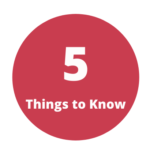Blog #9
Five Things You Need to Know About Dyslexia

1. Dyslexia is common.
Roughly 20% of children have dyslexia and almost 40 % of children will struggle with reading. Only 35% of U.S. children are reading proficiently by the 3rd Grade.
2. Dyslexia presents a struggle with reading and spelling.
Most commonly, parents and teachers notice a child’s dyslexia because the child is struggling with reading and spelling. There are so many other warning signs but this struggle raises the red classroom flag. Children with dyslexia struggle to remember their home address, parent’s phone number, and their birthday. They also struggle with sequencing. So, you may notice they struggle to remember day of the week in order. We will also see a struggle with rhyming words and learning the alphabet.
As children get older, their oral language often surpasses their writing skills. You will also notice that they use the wrong word to communicate an idea. For example, they may say specific rather than pacific. They will probably have a hard time learning a foreign language
3. Dyslexia is not outgrown.
Children with dyslexia can learn to read. They can even learn to read well. But the dyslexia is still there. Dyslexia is not an intellectual deficit. It is a struggle to decode and encode written language. So, they will never be “cured.” Your child can succeed with the right tools.
And we don’t want to cure it because the strengths far outweigh the struggles. If dyslexia is remediated, the tools and skills learned to read far outweigh the struggle. After they are reading efficiently, they benefit from the beautiful gifts of dyslexia.
4. Dyslexia comes with so many strengths.
Some of the many gifts of dyslexia are emotional intelligence, creativity, innovative thinking, problem solving, strong comprehension, curiosity, concept formation, big picture thinking… The list goes on and on. There is a reason that 40% of entrepreneurs are dyslexic. Dyslexic children have beautiful minds, and we want to nurture those gifts. We don’t really want to “cure” dyslexia. We just want to help them learn to read.
5. Dyslexia responds to Orton Gillingham intervention.
Children with dyslexia can learn to read with Orton Gillingham (OG) intervention. OG is not a magic bullet but it is research based and highly effective. Intervention should be multisensory, systematic, explicit, intensive (two sessions a week), and individualized. Most children need about 2 years of instruction. The best part? There’s no age limit. It’s never too early and it’s never too late!
Be Knowledgeable. Be tenacious. Don’t give up. You can help.
